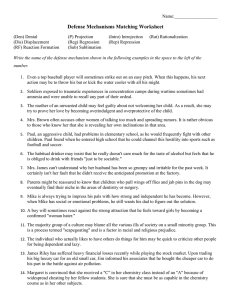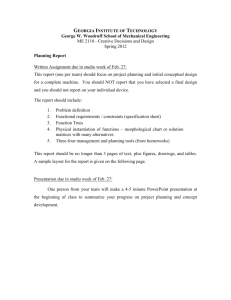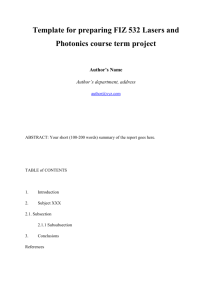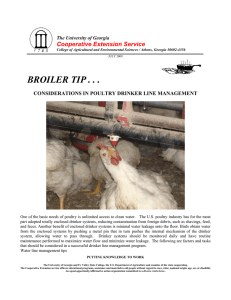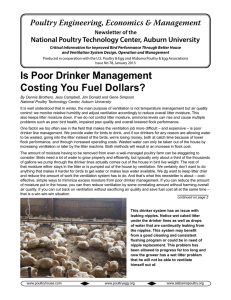Ethical analysis assignment
advertisement
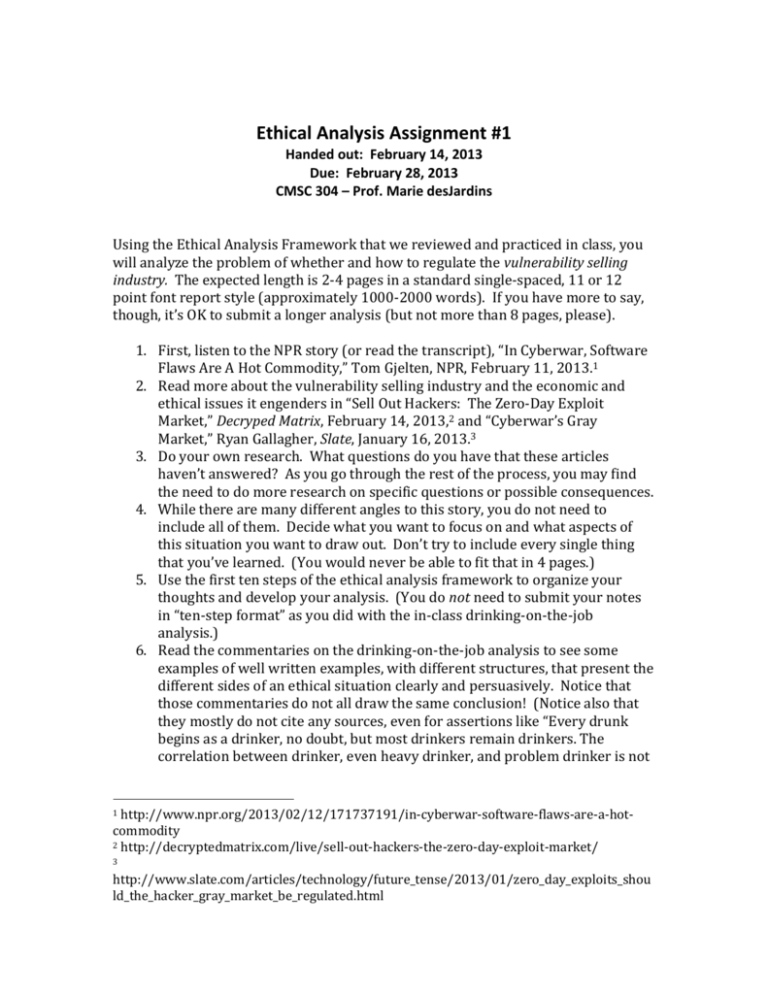
Ethical Analysis Assignment #1 Handed out: February 14, 2013 Due: February 28, 2013 CMSC 304 – Prof. Marie desJardins Using the Ethical Analysis Framework that we reviewed and practiced in class, you will analyze the problem of whether and how to regulate the vulnerability selling industry. The expected length is 2-4 pages in a standard single-spaced, 11 or 12 point font report style (approximately 1000-2000 words). If you have more to say, though, it’s OK to submit a longer analysis (but not more than 8 pages, please). 1. First, listen to the NPR story (or read the transcript), “In Cyberwar, Software Flaws Are A Hot Commodity,” Tom Gjelten, NPR, February 11, 2013.1 2. Read more about the vulnerability selling industry and the economic and ethical issues it engenders in “Sell Out Hackers: The Zero-Day Exploit Market,” Decryped Matrix, February 14, 2013,2 and “Cyberwar’s Gray Market,” Ryan Gallagher, Slate, January 16, 2013.3 3. Do your own research. What questions do you have that these articles haven’t answered? As you go through the rest of the process, you may find the need to do more research on specific questions or possible consequences. 4. While there are many different angles to this story, you do not need to include all of them. Decide what you want to focus on and what aspects of this situation you want to draw out. Don’t try to include every single thing that you’ve learned. (You would never be able to fit that in 4 pages.) 5. Use the first ten steps of the ethical analysis framework to organize your thoughts and develop your analysis. (You do not need to submit your notes in “ten-step format” as you did with the in-class drinking-on-the-job analysis.) 6. Read the commentaries on the drinking-on-the-job analysis to see some examples of well written examples, with different structures, that present the different sides of an ethical situation clearly and persuasively. Notice that those commentaries do not all draw the same conclusion! (Notice also that they mostly do not cite any sources, even for assertions like “Every drunk begins as a drinker, no doubt, but most drinkers remain drinkers. The correlation between drinker, even heavy drinker, and problem drinker is not http://www.npr.org/2013/02/12/171737191/in-cyberwar-software-flaws-are-a-hotcommodity 2 http://decryptedmatrix.com/live/sell-out-hackers-the-zero-day-exploit-market/ 1 3 http://www.slate.com/articles/technology/future_tense/2013/01/zero_day_exploits_shou ld_the_hacker_gray_market_be_regulated.html strong.” You, by contrast, should cite your sources, and should not make unsupported assertions (see #9).) 7. Write your own cogent (which means “clear and understandable”) essay presenting your analysis. It should include all of the key information that you organized in your ten-step process, but it should not just be linearly presented as those ten pieces of information sequentially. (And whatever you do, do not start a sentence with, “The stakeholders in this case are...”) Think about what conclusion you drew and use that as a thesis statement, then create a narrative structure that will let you support that thesis using the information from your analysis. You probably want to write an outline first to organize the general order in which you’ll present the information, and what you’ll say, before you write the final essay. 8. Start this assignment soon! Feel free to come by my office hours to talk about your notes from the ten-step process, review your outline, or ask me to look through parts of an early draft with you. Write the essay early enough that you have time to set it aside, let it rest, and then come back to it with a fresh eye to edit and proofread. It’s OK to ask a friend/peer to read and comment on your draft, but they should not rewrite it for you, and you should indicate what kind of editing help you received, if any. 9. Please be very careful about any quotations or wording you’d like to borrow from your sources, and quote and cite those sources appropriately, consistently with the course policy. You should also cite your sources for any specific facts, findings, or sources of expert opinions (but you don’t need to cite sources for general knowledge like what a zero-day vulnerability is). 10. Include a bibliography (list of references) that is easy to read and has full bibliographic information (not just URLs, even if you found a source online). MLA style is suggested but you are free to use any style as long as it’s internally consistent.
